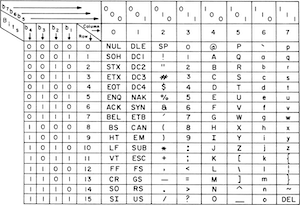Ascii85 Encoder (Text to Base85 Converter)
About ASCII85 / Base85 Encoder Tool
This ASCII85 encoder, also known as the Base85 encoder, is a free online tool that allows you to encode your text message into ASCII85 code. This code represents text using a set of 85 ASCII characters, enabling more efficient storage and transmission of the message. Simply enter your text message into the input field and the tool will automatically encode it into ASCII85 code, which will be displayed in a box below the input field. This tool can be useful for a variety of purposes, such as encoding text for use in email messages, online forums, or other applications that require ASCII85 text.
Steps for using the ASCII85 encoder tool:
- First enter or paste your text message in the input text box.
-
Then select the encoding type:
- Text: Converts your text message to Ascii85 code. For example, mytecbits.com will be converted to D0^57@q'.oF"Us@D#.
- Decimal Byte: Converts your text message decimal format. Each Ascii85 encoded character will be converted to decimal format separated by space. For example, mytecbits.com will be converted to For example, mytecbits.com will be converted to 68 48 94 53 55 64 113 39 46 111 70 34 85 115 64 68 35.
- Hexadecimal Byte: Converts your text message hexadecimal format. Each Ascii85 encoded character will be converted to hexadecimal format separated by space. For example, mytecbits.com will be converted to 44 30 5E 35 37 40 71 27 2E 6F 46 22 55 73 40 44 23.
- Binary Byte: Converts your text message binary format. Each Ascii85 encoded character will be converted to binary byte format separated by space. For example, mytecbits.com will be converted to 01000100 00110000 01011110 00110101 00110111 01000000 01110001 00100111 00101110 01101111 01000110 00100010 01010101 01110011 01000000 01000100 00100011.
- Finally press Convert to ASCII85 button.
- The text message will be encoded to Ascii85 code and appears in the output box below.
About ASCII85 / Base 85 Encoding

ASCII85 Encoding (also known as Base 85 Encoding) is a binary-to-text encoding scheme that represents binary data using only 85 ASCII printable characters. This encoding scheme is commonly used in situations where data needs to be transmitted or stored in a text format, but the original binary data may contain non-printable or special characters that cannot be represented in text.
History of ASCII85 Encoding
ASCII85 Encoding was initially developed by Adobe Systems for use in their PDF and PostScript file formats. It was designed to provide a more efficient alternative to the commonly used Base64 encoding, which uses 64 ASCII characters to represent binary data. By using 85 ASCII characters, ASCII85 encoding allows more data to be represented in a shorter sequence of characters, which can be useful in situations where space or bandwidth is limited.
How ASCII85 Encoding Works
ASCII85 encoding works by converting four binary bytes into five ASCII characters. The resulting ASCII characters represent a value between 0 and 85, which can be represented using a single ASCII character. This is more efficient than Base64 encoding, which represents three binary bytes using four ASCII characters.
To encode a binary message using ASCII85 encoding, the message is first split into 32-bit (4-byte) chunks. The first chunk is then converted to a set of five ASCII characters using the following formula:
c1 = n / 85^4 % 85 c2 = n / 85^3 % 85 c3 = n / 85^2 % 85 c4 = n / 85^1 % 85 c5 = n / 85^0 % 85
Where n is the 32-bit chunk being encoded, and c1 to c5 are the resulting ASCII characters. These characters are then concatenated together to form a string of five characters.
This process is repeated for each 32-bit chunk in the message, with the final chunk being padded with zero bytes if necessary. The resulting ASCII characters are concatenated together to form the encoded message.
To decode an ASCII85-encoded message, the reverse process is used. The ASCII characters are first converted back to their corresponding 0-85 values, and then combined to form a set of four binary bytes.
Applications of ASCII85 Encoding
ASCII85 encoding has several applications in computer science and engineering. Some of the most common applications include:
- Data transmission: ASCII85 encoding is commonly used to transmit binary data over text-based communication channels, such as email or instant messaging.
- File compression: Some file compression algorithms, such as bzip2 and Git, use ASCII85 encoding to represent compressed data in a text format.
- Data encryption: ASCII85 encoding can be used as a simple form of data encryption, by encoding a message and then transmitting it over an insecure channel.
- Obfuscation: ASCII85 encoding can be used to obfuscate binary data, by converting it to a text format that is more difficult to read and understand.
Conclusion
ASCII85 Encoding is a powerful binary-to-text encoding scheme that can be used in a wide variety of applications. Its efficient use of printable ASCII characters makes it an attractive alternative to other encoding schemes, such as Base64, in situations where space or bandwidth is limited. Understanding the principles of ASCII85 encoding can be helpful for software developers and computer engineers who work with binary data on a regular basis.
Reference
- About Ascii85 or Base85 at wikipedia.org
Page Last Modified On: Mar 30, 2023
Disclaimer: We took every effort to provide higher level of accuracy in the calculators, converters and tools we have added to www.MyTecBits.com Tools section. But, we cannot give any guarantee or can be held responsible for any errors, defects, faults or mistakes in any of the calculators, converters or tools. Please see detailed terms of use and liability disclaimer in Terms of Use Page.